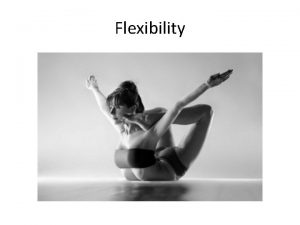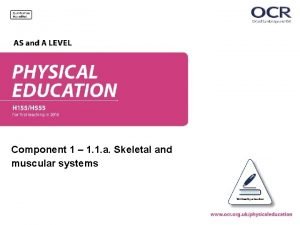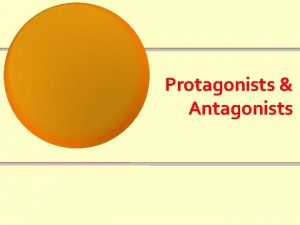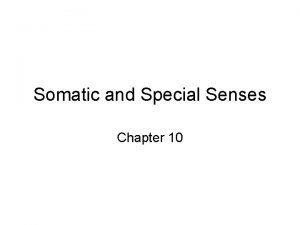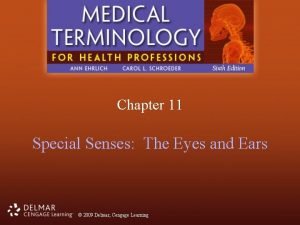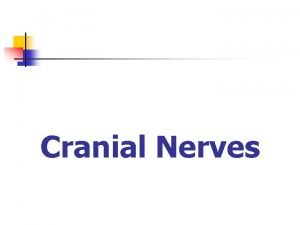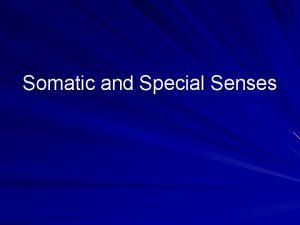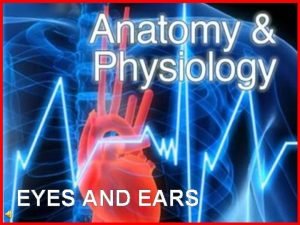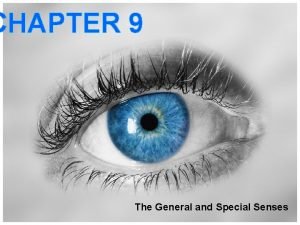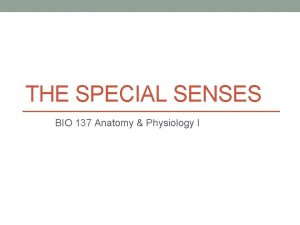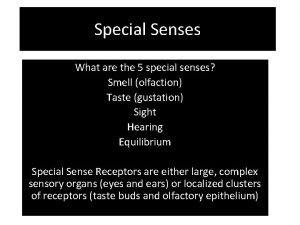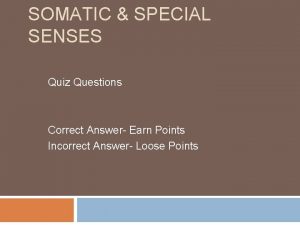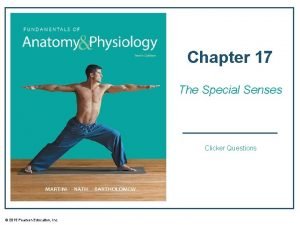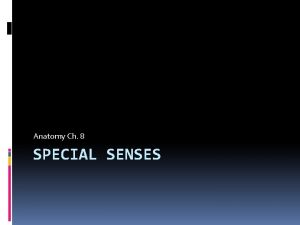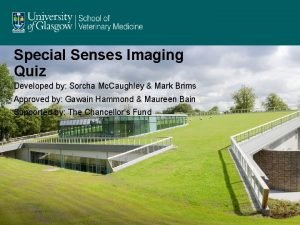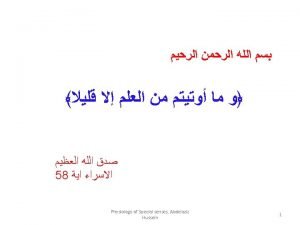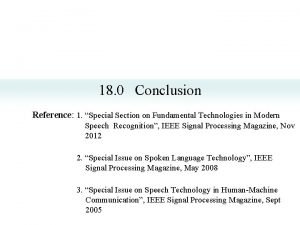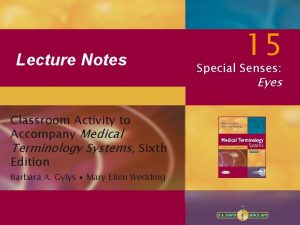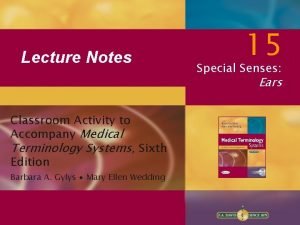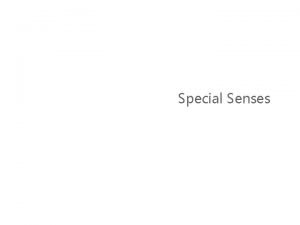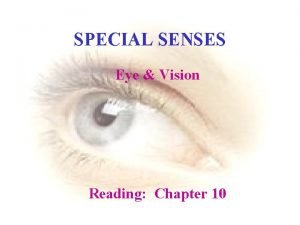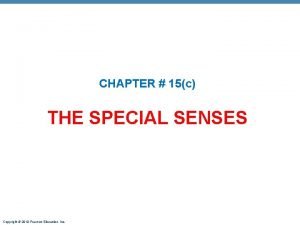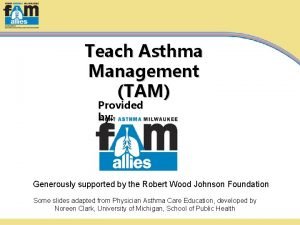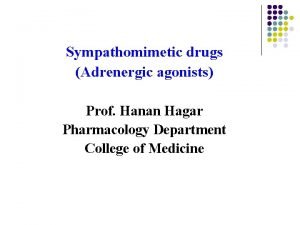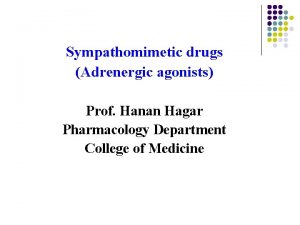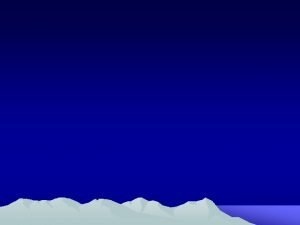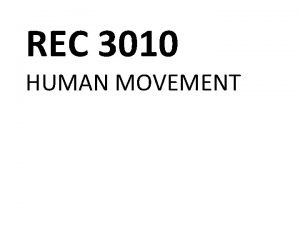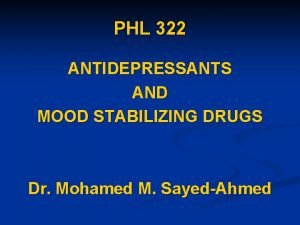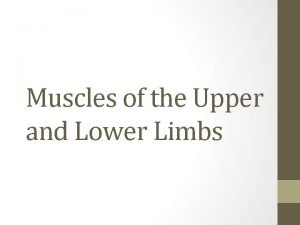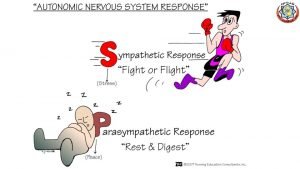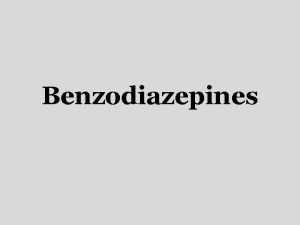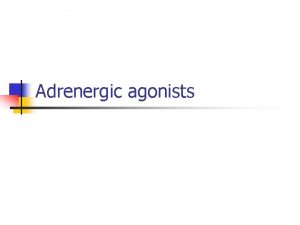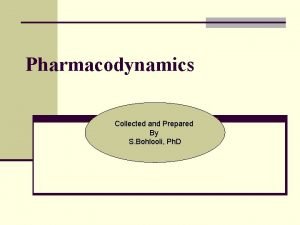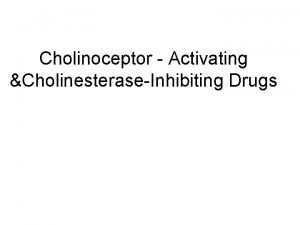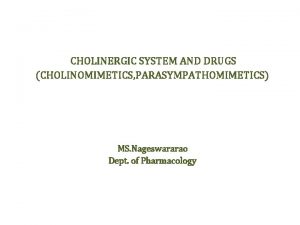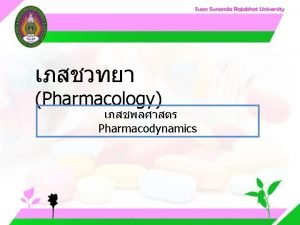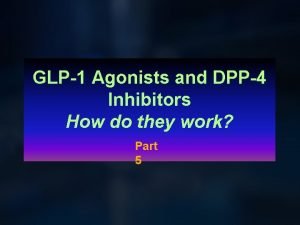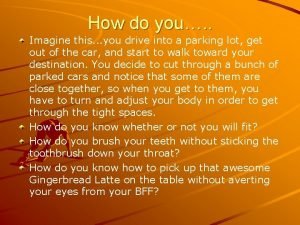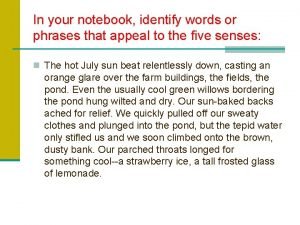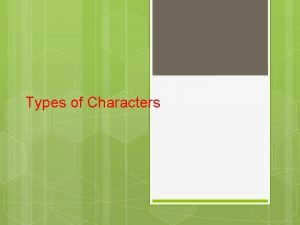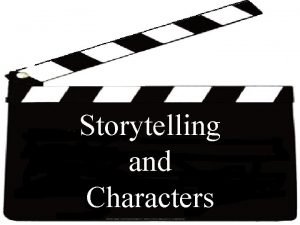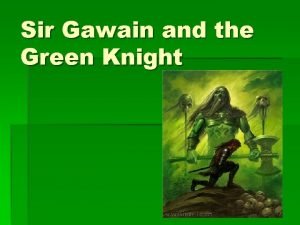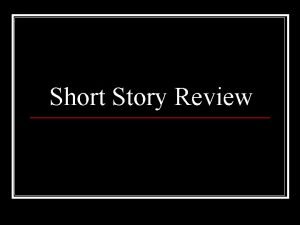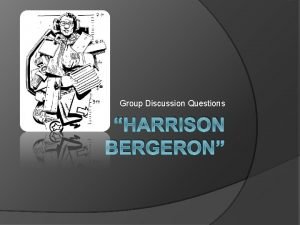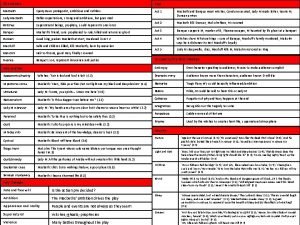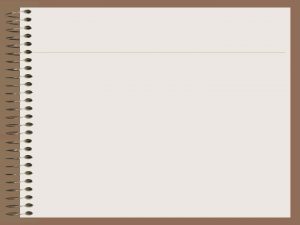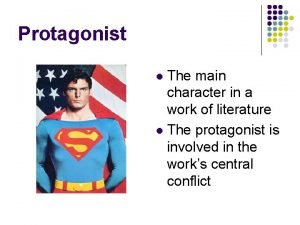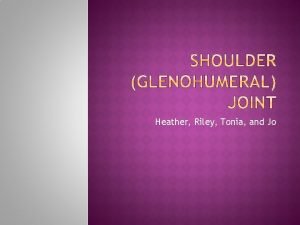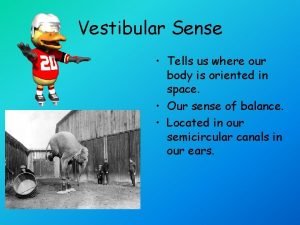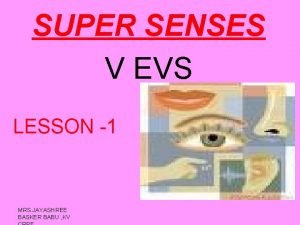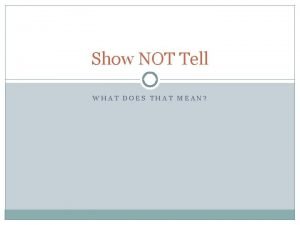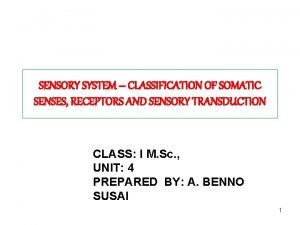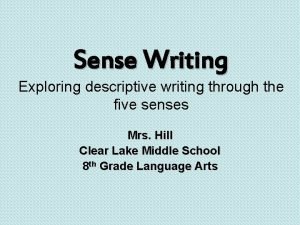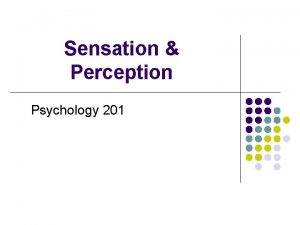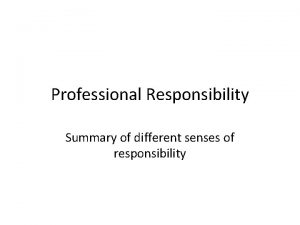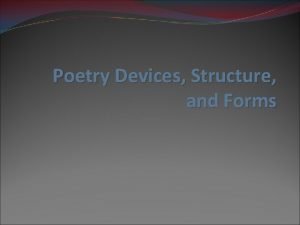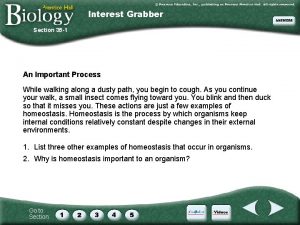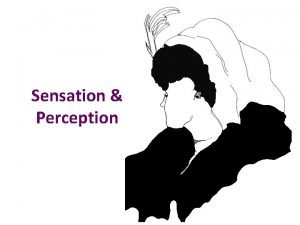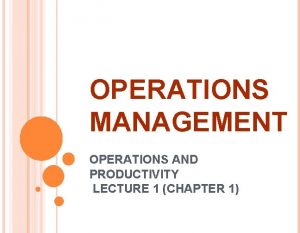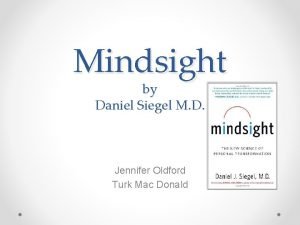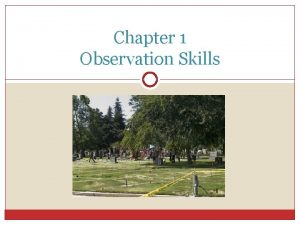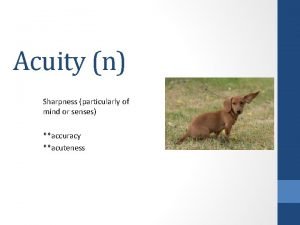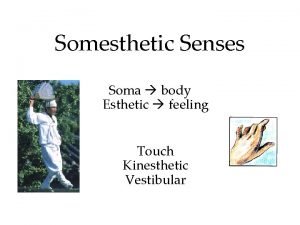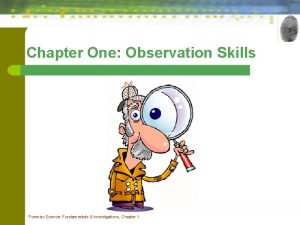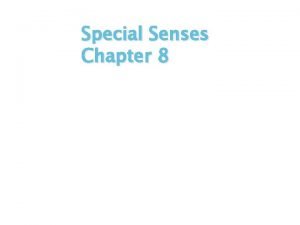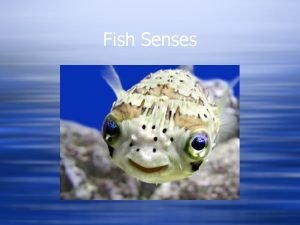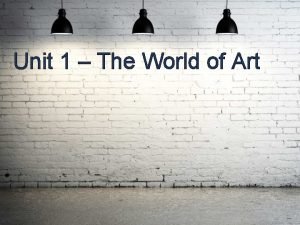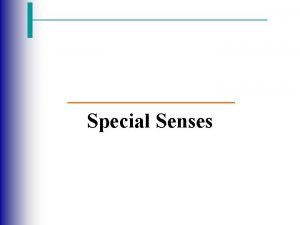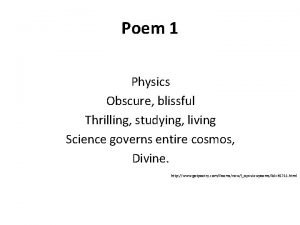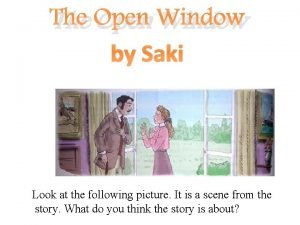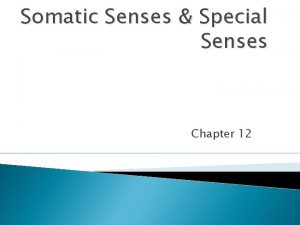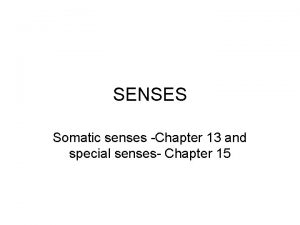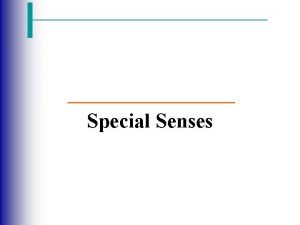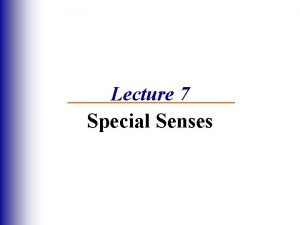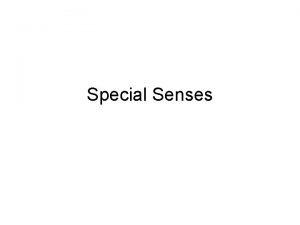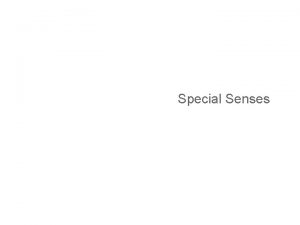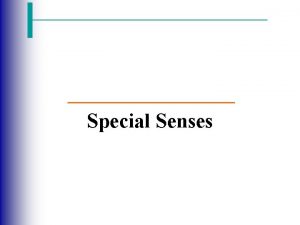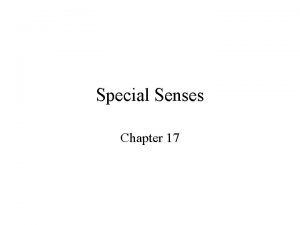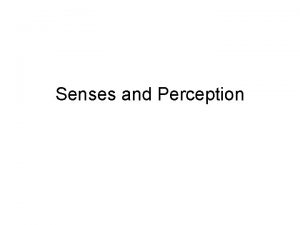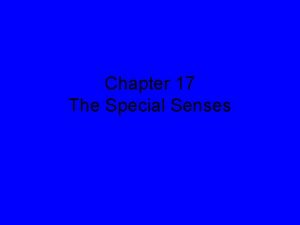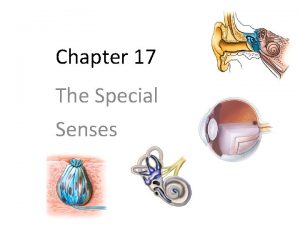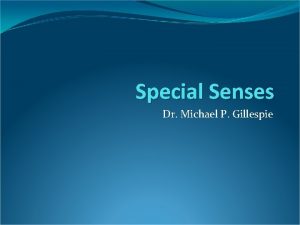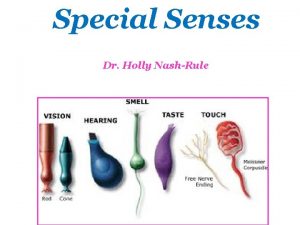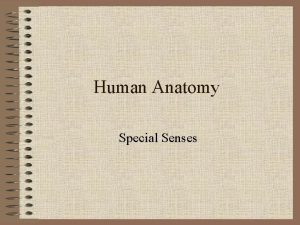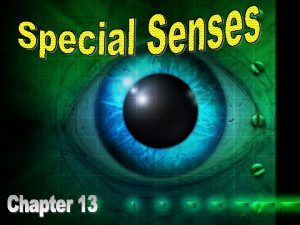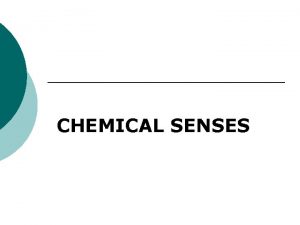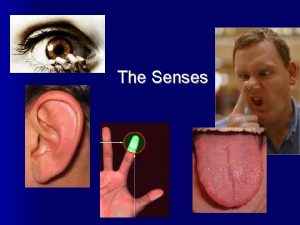SPECIAL SENSES Agonist and Antagonist Muscles Muscles that
















































































































- Slides: 112

SPECIAL SENSES





Agonist and Antagonist Muscles • Muscles that work in opposite directions to complete an action.

Agonist Muscle • Reacts in response to voluntary or involuntary stimulus • creates the mvmnt necessary to complete a task.

Antagonist Muscle • Acts against the agonist muscle and • helps to move the body part back in place after the action is completed.



Lateral Rectus Muscle • The agonist of the Medial Rectus Muscle • Moves eye in an outward direction – laterally - away from the nose (Abduction) • Its origin point is the Annulus of Zinn and its insertion point is the Sclera

Medial Rectus


Medial Rectus Muscle • The antagonist of the Lateral Rectus Muscle • Moves the eye in an inward direction – medially - toward the nose (Adduction) • Its origin point is the Annulus of Zinn and its insertion point is the Sclera


Annulus of Zinn • Fibrous ring located in posterior region of the orbit – around the optic canal • Located around the optic canal and encloses a part of the superior orbital fissure • The common fibrous origin of the 4 recti muscles • Named after Johann Gottfried Zinn

Johann Gittfried Zinnia

2 Parts of Annulus of Zinn • Upper part – Superior Tendon of Lockwood – Gives origin to superior rectus, part of medial rectus, and upper head of lateral rectus • Lower Part – Ligament/Tendon of Zinn – Gives origin to inferior rectus, part of medial rectus, and lower head of lateral rectus




Superior Rectus Muscle • The agonist of the Inferior Rectus Muscle • Responsible for 2 mvmnts of the eye – Upward (Elevation) – Moves the eye inward (Adduction) • Its origin point is from the Annulus of Zinn • Its insertion point is into the Sclera of the eye



Inferior Rectus Muscle • The antagonist of the Superior Rectus Muscle. • Responsible for 2 mvmnts: – Downward (Depression) – Moves the eye inward (Adduction) • Its origin point is the Annulus of Zinn • Its insertion point is into the sclera of the eye





Superior Oblique Muscle • The agonist of the Inferior Oblique Muscle • Responsible for 2 mvmnts: – Moves eye in downward direction (Depression) – Moves the eye in outward direction (Abduction)

• Its origin point is from the posterior of the Annulus of Zinn • it then passes anteriorly and ends in a round tendon. • The tendon extends through a pulley-like loop of fibrocartilaginous tissue called the trochlea (Pulley) in the anterior medial part of the roof of the orbit • and then turns to its insertion point on the posterolateral aspect of the eyeball.




Inferior Oblique Muscle • The antagonist of Superior Oblique muscle • Responsible for 2 mvmnts – Moves the eye in an upward direction (Elevation) – Moves the eye in an outward direction (Abduction)

• Its origin point is from the maxilla at the anteromedial aspect of the floor of the orbit • its insertion point is on the posterolateral aspect of the eyeball












Tapetum

Giraffe Tapetum



3 Accessory Eye Structures


Conjunctiva • A thin, clear, moist membrane - coats inner surfaces of the eyelids (palpebral conjunctiva) and outer surface of eye (ocular, or bulbar, conjunctiva). • Inflammation of conjunctiva is called conjunctivitis (pinkeye) • Secretes mucus



Lacrimal Glands • Secrete a mixture of salt H 2 O, ions and proteins (lysozymes). • Tears that cover surface of eye are essential for maintenance of transparent cornea • film keeps cornea wet; allowing gas XΔ – cleans debris from transparent surface, provides clear path to retina – Protects ocular surface from invasion by bacteria and viruses…Antimicrobial Properties


Tarsal (Meibomian) Glands • secrete lipids - help stabilize the tear film • minimize evaporative loss of tear fluid • Maintain aq tear volume - keeps ocular surface protected thruout blink cycle • Lipids allow tear fluid to maintain its viscosity spreads quickly over eye’s surface after each blink

Meibomian glands are not visible, only their tiny opening in the lid (yellow arrows). Green arrows indicating upper and lower punctum (opening in the lid for the tears flow).



Blocked Meibomian Gland


Parts of the Eye





Suspensory Ligament


Aqueous Humor

Sclera


Optic Disk



Ciliary Body


Choroid Coat



Retina


Vitreous Humor



Iris


Pupil

Fovea Centralis

• Macula - Section of the retina that the light hits. • Fovea Centralis – The very center of the macula – The point on the retina that is the absolute center of a person’s direct vision

Cornea


Lens



Additional Terms


Accomodation Pupillary Reflex • Reflex constriction of the pupils when viewing close objects

Astigmatism

Cataract


Convergence

Glaucoma


Night Blindness • Inability to see well in the dark • Often caused by Vitamin A deficiency

Photopupillary Reflex

Refraction



• What controls the amount of light that goes into the eye? • How does the eye see images? • What do people with brown eyes have that people with blue eyes do not? • How do the lenses of our eyes change when an object is far away? • What parts of the retina help us see at night? • What parts of the retina help us see colors? • What is the first step in making an artificial eye? • How large is the eyeball? CCC! Eyeball…. . Bill Nye
 Learning targets
Learning targets What is the difference between somatic and special senses
What is the difference between somatic and special senses Messiners
Messiners Prime mover of knee flexion
Prime mover of knee flexion Shoulder flexion agonist and antagonist
Shoulder flexion agonist and antagonist Protagonists and antagonists
Protagonists and antagonists Thermoreceptors
Thermoreceptors Learning exercises chapter 11 medical terminology
Learning exercises chapter 11 medical terminology Anatomy and physiology chapter 8 special senses
Anatomy and physiology chapter 8 special senses Cranial nerves special senses
Cranial nerves special senses The general senses
The general senses Somatic senses
Somatic senses Special senses the eyes and ears
Special senses the eyes and ears The general and special senses chapter 9
The general and special senses chapter 9 What are the special senses
What are the special senses Five special senses
Five special senses The cones of the retina are coursera quiz answers
The cones of the retina are coursera quiz answers Chapter 17 special senses answer key
Chapter 17 special senses answer key Eye anatomy
Eye anatomy Special senses quiz
Special senses quiz Palpebral fissure
Palpebral fissure Conclusion of special senses
Conclusion of special senses Building vocabulary activity: the special senses
Building vocabulary activity: the special senses Building vocabulary activity: the special senses
Building vocabulary activity: the special senses Houses the receptors for hearing
Houses the receptors for hearing Chapter 10 special senses
Chapter 10 special senses Pearson
Pearson Chapter 15 special senses
Chapter 15 special senses Phân độ lown
Phân độ lown Block xoang nhĩ độ 2
Block xoang nhĩ độ 2 Thể thơ truyền thống
Thể thơ truyền thống Thơ thất ngôn tứ tuyệt đường luật
Thơ thất ngôn tứ tuyệt đường luật Walmart thất bại ở nhật
Walmart thất bại ở nhật Tìm vết của đường thẳng
Tìm vết của đường thẳng Con hãy đưa tay khi thấy người vấp ngã
Con hãy đưa tay khi thấy người vấp ngã Tôn thất thuyết là ai
Tôn thất thuyết là ai Gây tê cơ vuông thắt lưng
Gây tê cơ vuông thắt lưng Sau thất bại ở hồ điển triệt
Sau thất bại ở hồ điển triệt B2 agonist inhaler
B2 agonist inhaler What is the starting material for synthesis of salbutamol
What is the starting material for synthesis of salbutamol Sympathomimetic
Sympathomimetic Alpha 2 agonist
Alpha 2 agonist Circumduction movement
Circumduction movement Half life fluoxetine
Half life fluoxetine Prime mover for arm extension
Prime mover for arm extension Direct acting cholinergic agonist drugs
Direct acting cholinergic agonist drugs Flumazenil structure
Flumazenil structure Beta agonist hyperglycemia
Beta agonist hyperglycemia Alpha adrenergic agonist
Alpha adrenergic agonist Alpha-2 adrenergic
Alpha-2 adrenergic Spare receptors
Spare receptors Muscarinic agonist
Muscarinic agonist N-cholinomimetics
N-cholinomimetics Pectoralis major shoulder flexion
Pectoralis major shoulder flexion Types of antagonists
Types of antagonists Gpr65 agonist
Gpr65 agonist Glp-1 agonist
Glp-1 agonist Protagonist and antagonist in romeo and juliet
Protagonist and antagonist in romeo and juliet Metaphor examples romeo and juliet
Metaphor examples romeo and juliet 5 senses and 5 elements
5 senses and 5 elements Facts about taste
Facts about taste Kinesthetic and vestibular senses
Kinesthetic and vestibular senses In your notebook identify the function of each
In your notebook identify the function of each Antagonist
Antagonist Conflict in cinderella
Conflict in cinderella Dynamic movie characters
Dynamic movie characters Pharmacology introduction
Pharmacology introduction Antagonist in the great gatsby
Antagonist in the great gatsby Antagonist in the novel a christmas carol
Antagonist in the novel a christmas carol The lady or the tiger king characteristics
The lady or the tiger king characteristics Who is the antagonist in sir gawain and the green knight
Who is the antagonist in sir gawain and the green knight Charlie and the chocolate factory antagonist
Charlie and the chocolate factory antagonist The sniper protagonist and antagonist
The sniper protagonist and antagonist The lottery by shirley jackson climax
The lottery by shirley jackson climax Protagonist and antagonist in harrison bergeron
Protagonist and antagonist in harrison bergeron Macbeth antagonist
Macbeth antagonist What is a short narrative
What is a short narrative Literary devices in romeo and juliet
Literary devices in romeo and juliet Who is the antagonist in the story all summer in a day
Who is the antagonist in the story all summer in a day Protagonist and antagonist
Protagonist and antagonist Posterior axillary fold muscles
Posterior axillary fold muscles Vestibular senses
Vestibular senses 7 senses of the body
7 senses of the body Epiglottis taste buds
Epiglottis taste buds Tiger super sense
Tiger super sense What is descriptive essay
What is descriptive essay Classification of somatic senses
Classification of somatic senses Descriptive essay beach using five senses
Descriptive essay beach using five senses Cerebral achromatopsia
Cerebral achromatopsia What is sense of responsibility at work
What is sense of responsibility at work Types of imagery in literature
Types of imagery in literature Section 35-5 drugs and the nervous system answer key
Section 35-5 drugs and the nervous system answer key Visual channel in hci
Visual channel in hci 5 senses
5 senses Absolute threshold psychology definition
Absolute threshold psychology definition The ten critical decisions of operations management include
The ten critical decisions of operations management include Mindsight definition
Mindsight definition What a person perceives using his or her senses
What a person perceives using his or her senses Sharpness (particularly of the mind or senses)
Sharpness (particularly of the mind or senses) What are somesthetic senses
What are somesthetic senses Five senses poem generator
Five senses poem generator Observation forensic science definition
Observation forensic science definition Where are the general senses located
Where are the general senses located Elephant super senses
Elephant super senses Sharks use magnetic to seas
Sharks use magnetic to seas Multiple senses of lexical items
Multiple senses of lexical items To become deeply aware through the senses
To become deeply aware through the senses Crisis survival kit dbt
Crisis survival kit dbt Tongue epithelium
Tongue epithelium Poem about physics
Poem about physics Cheetah characteristics
Cheetah characteristics First day after the war
First day after the war Framton sees a ghost. true false
Framton sees a ghost. true false
